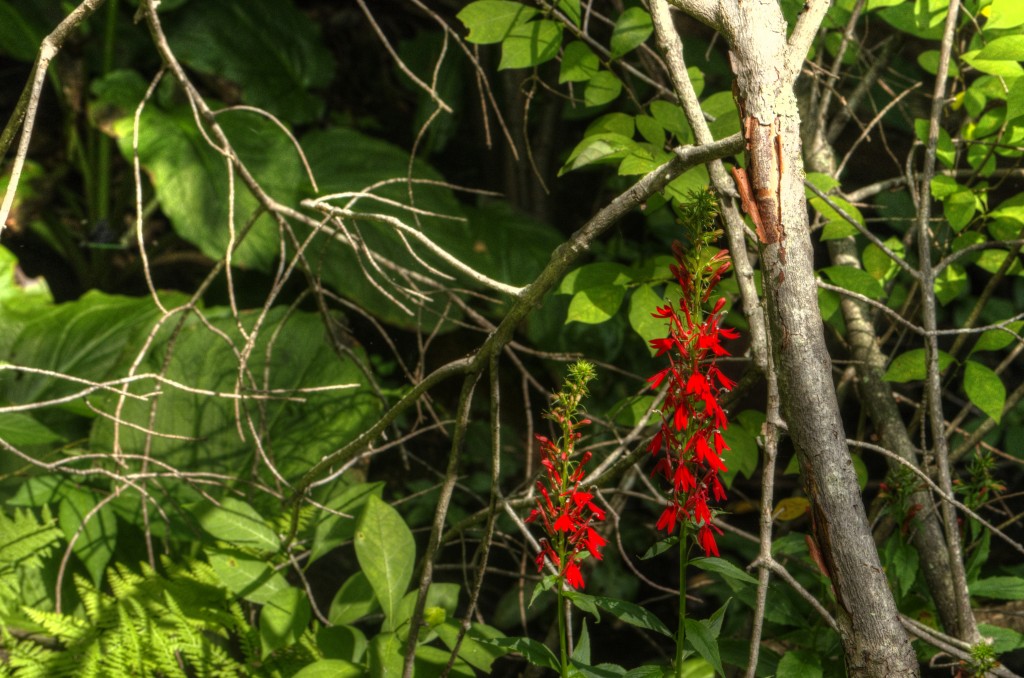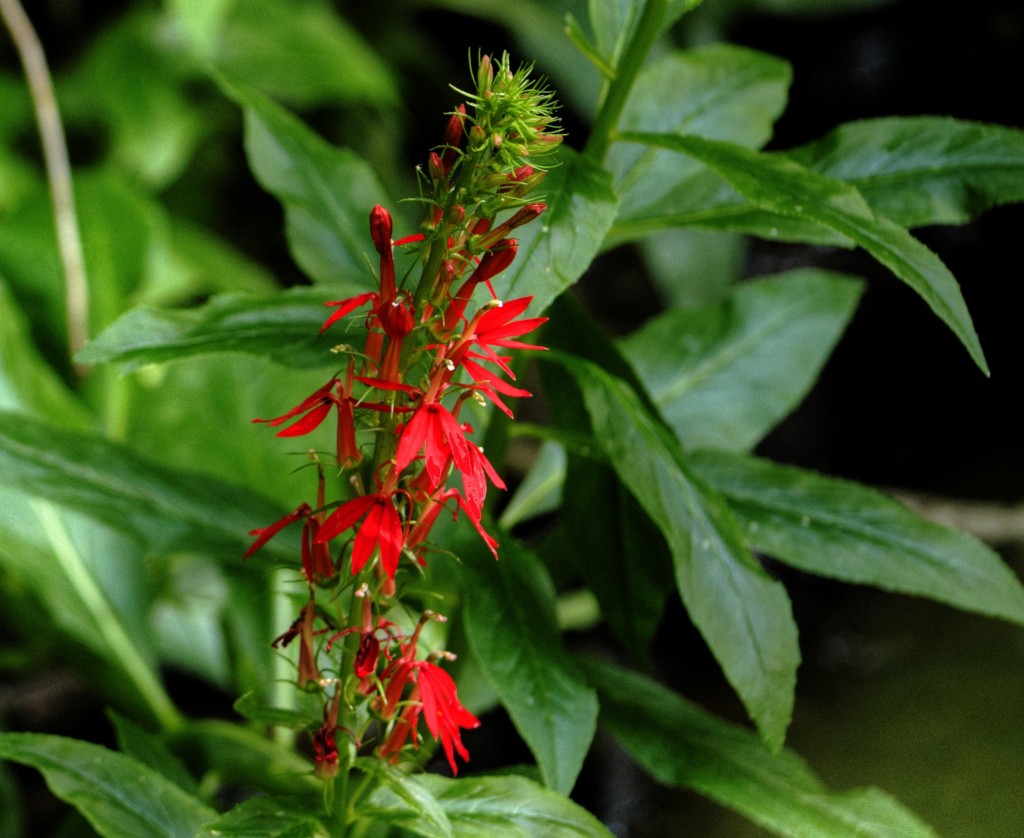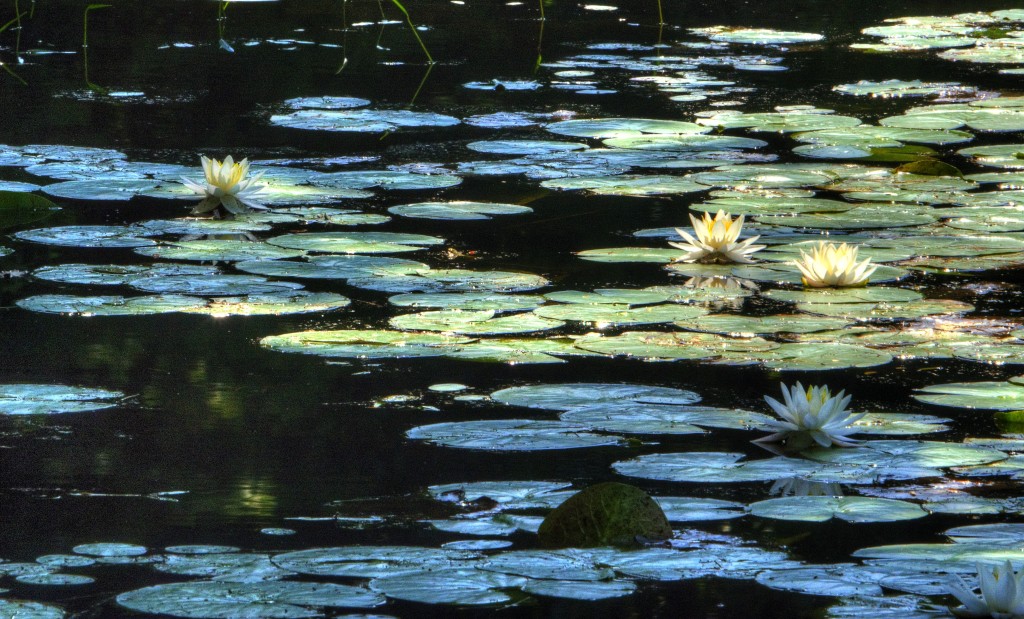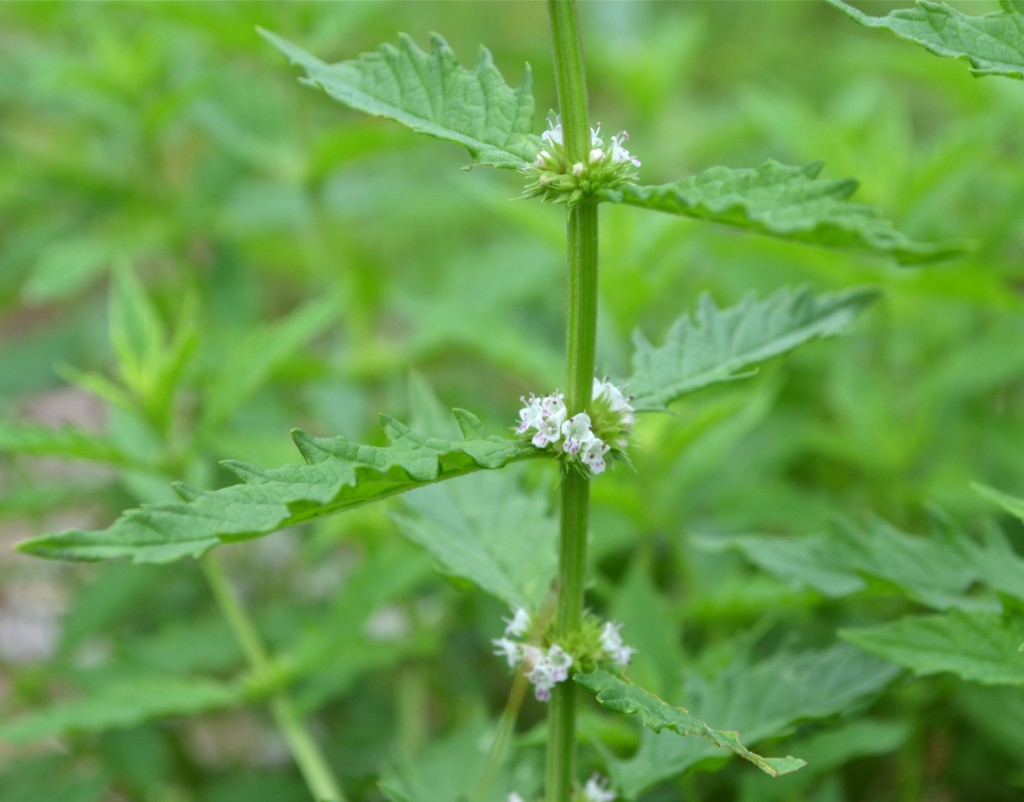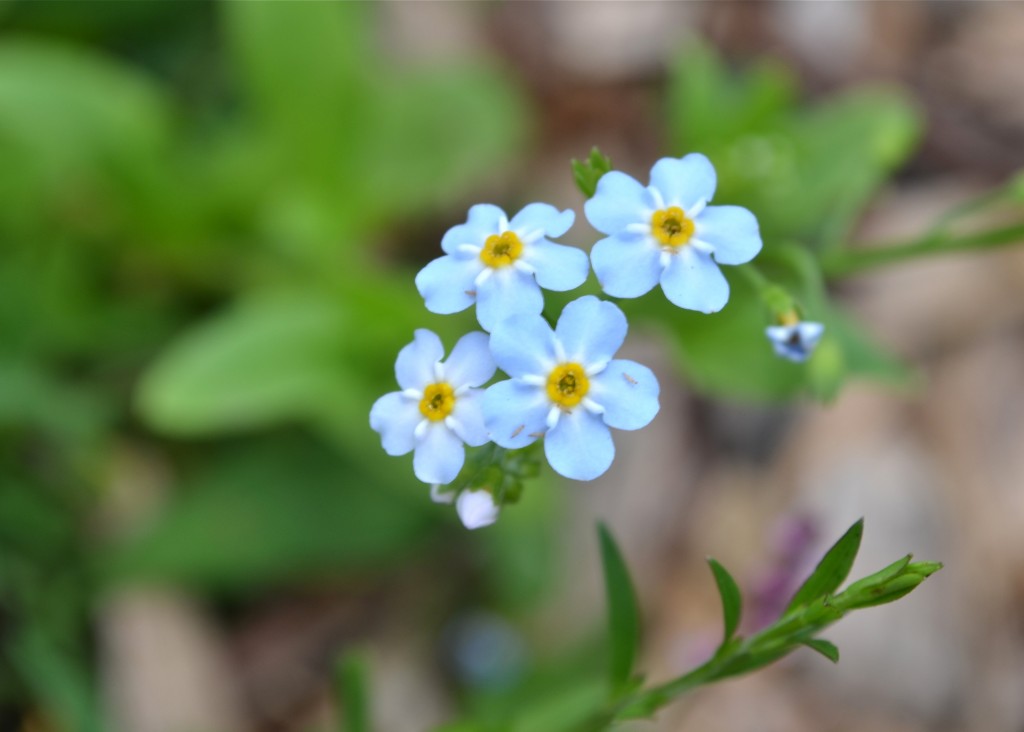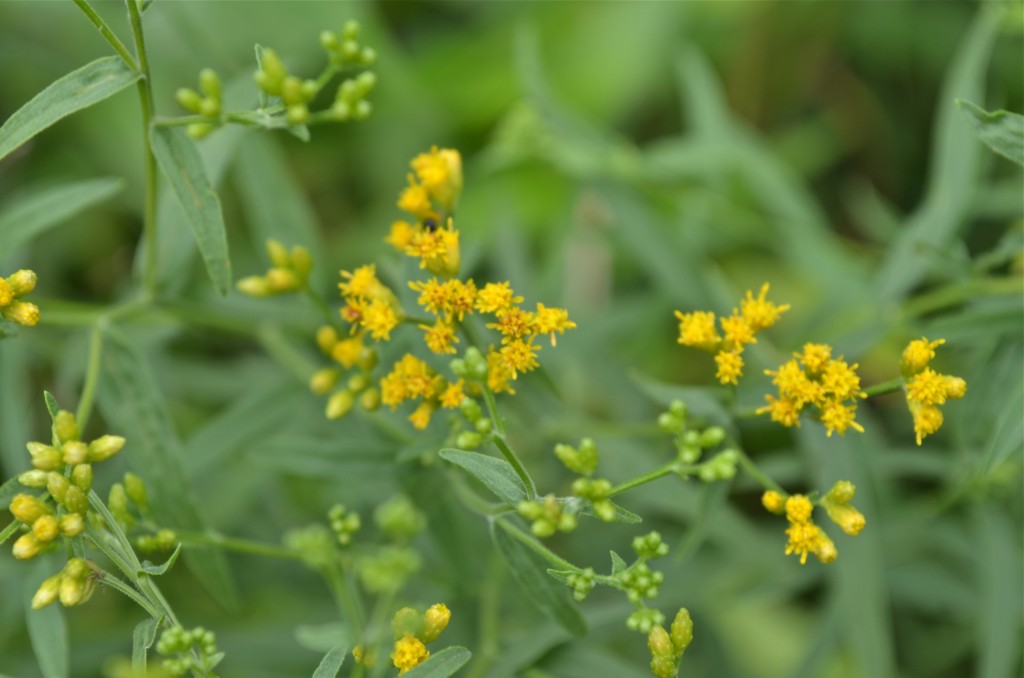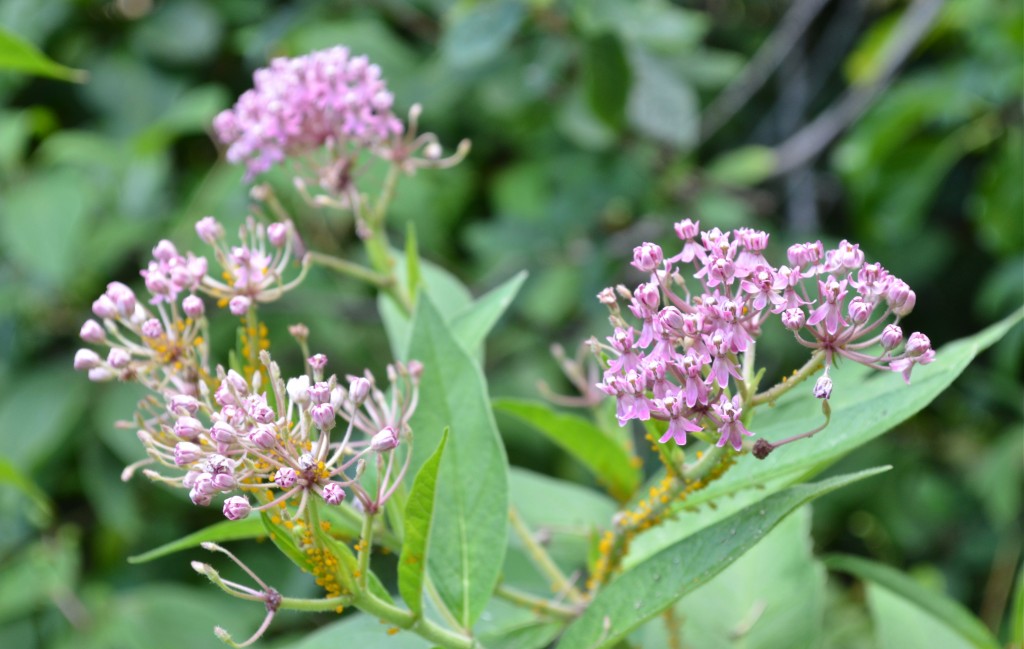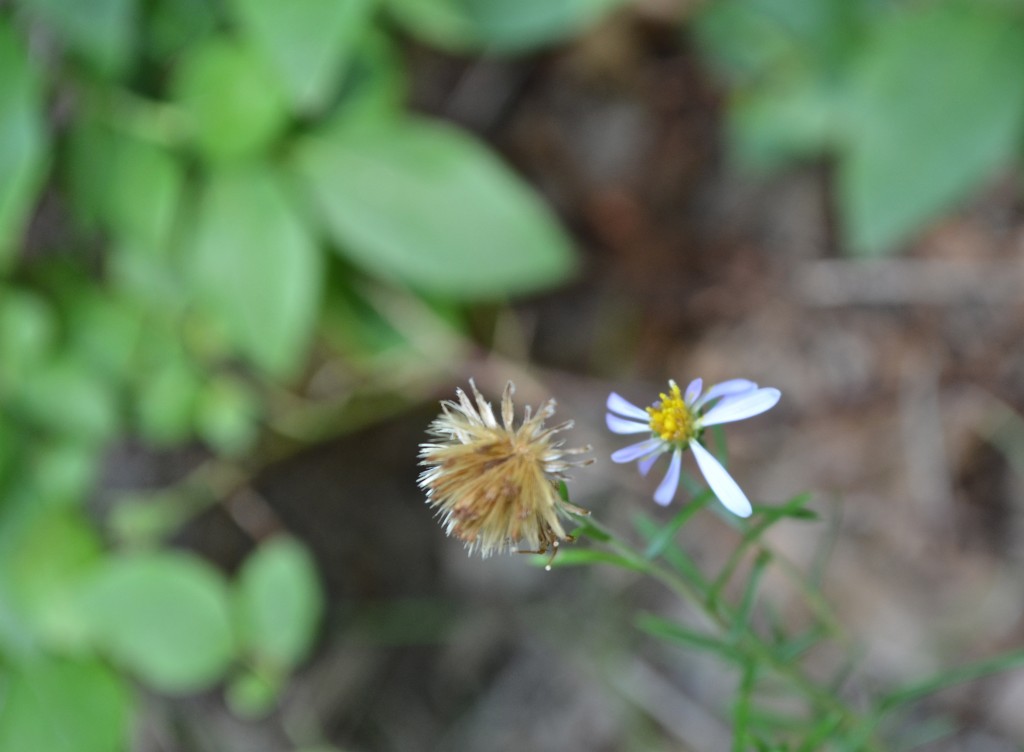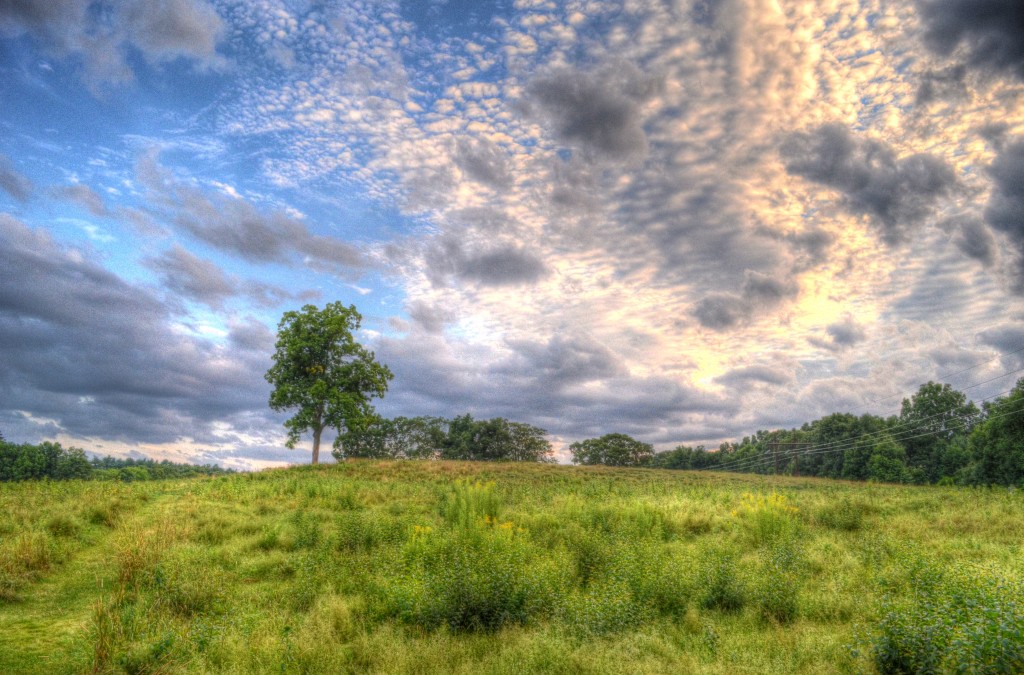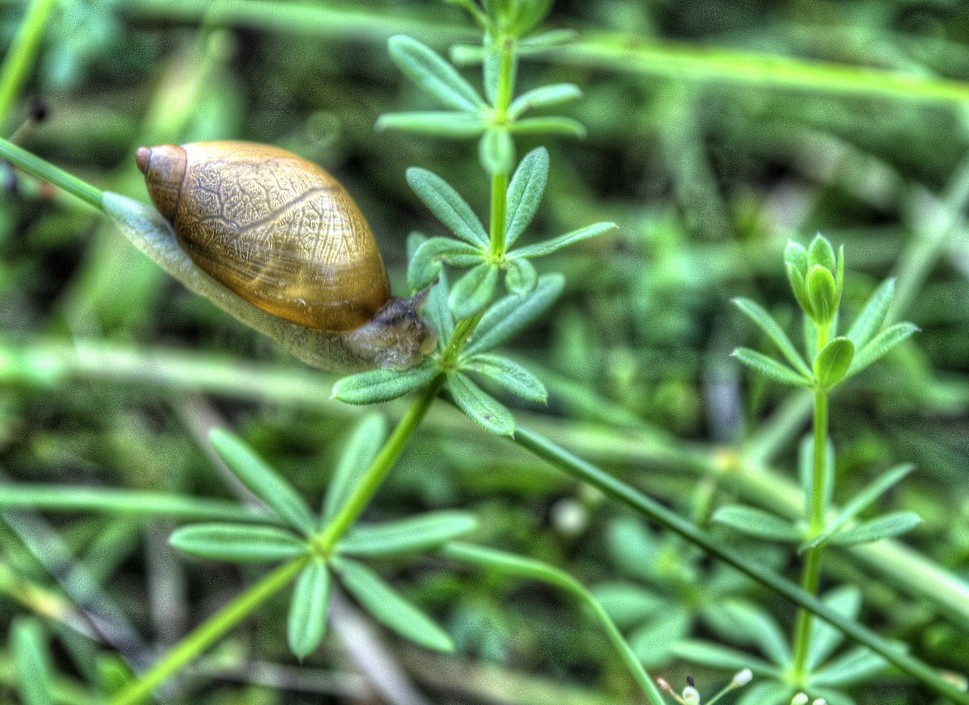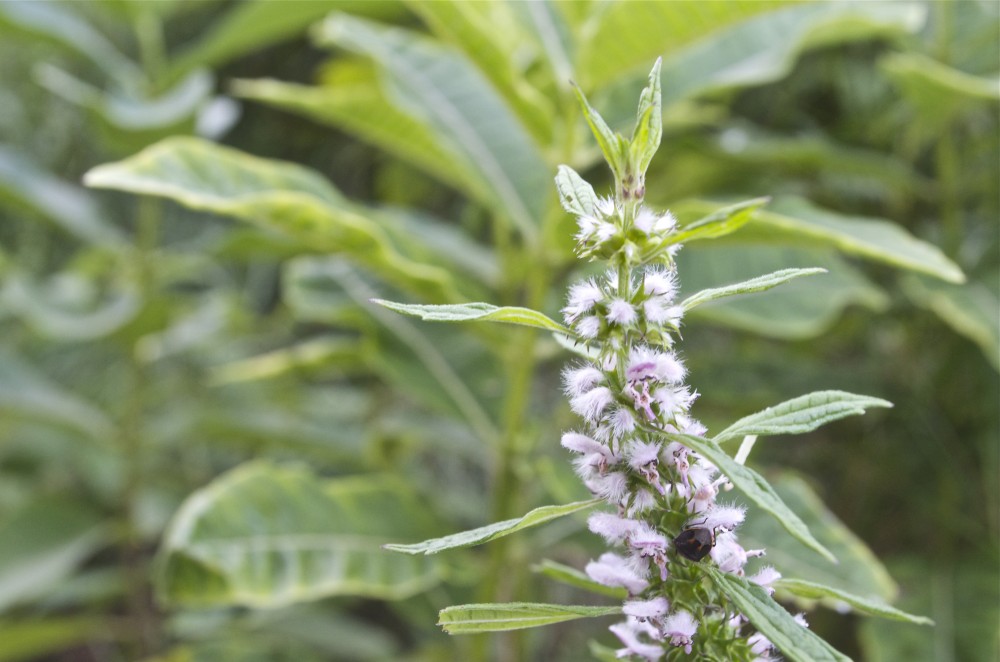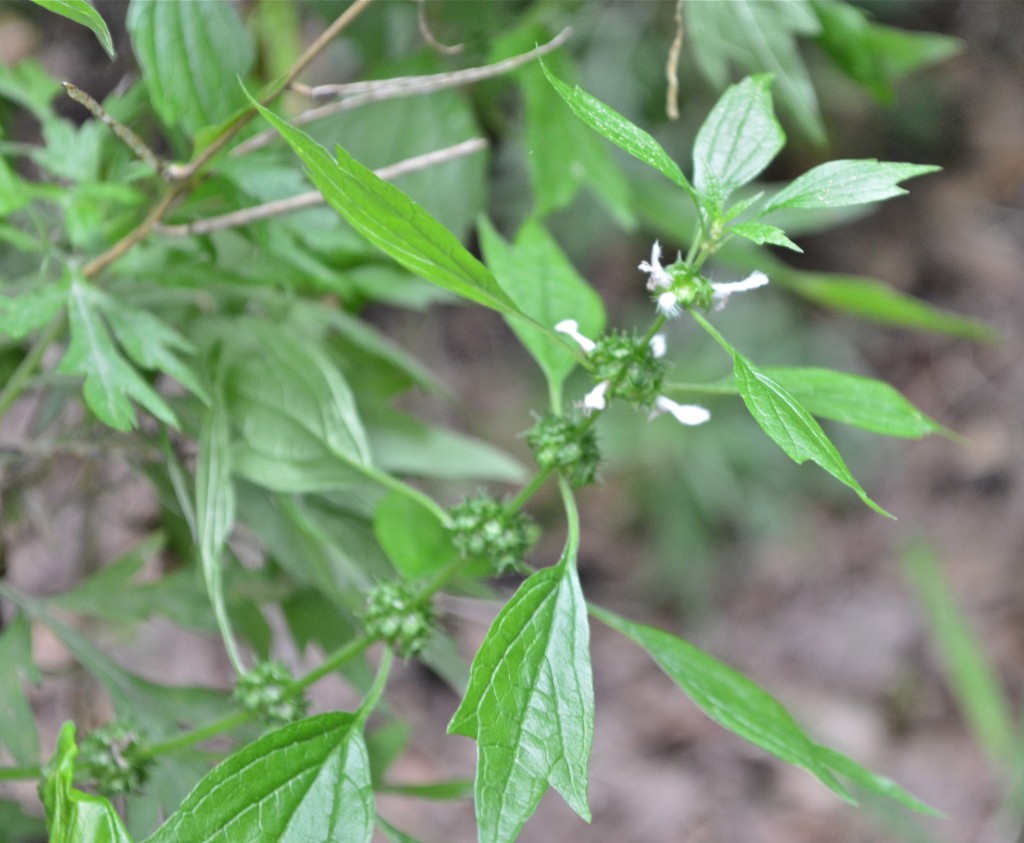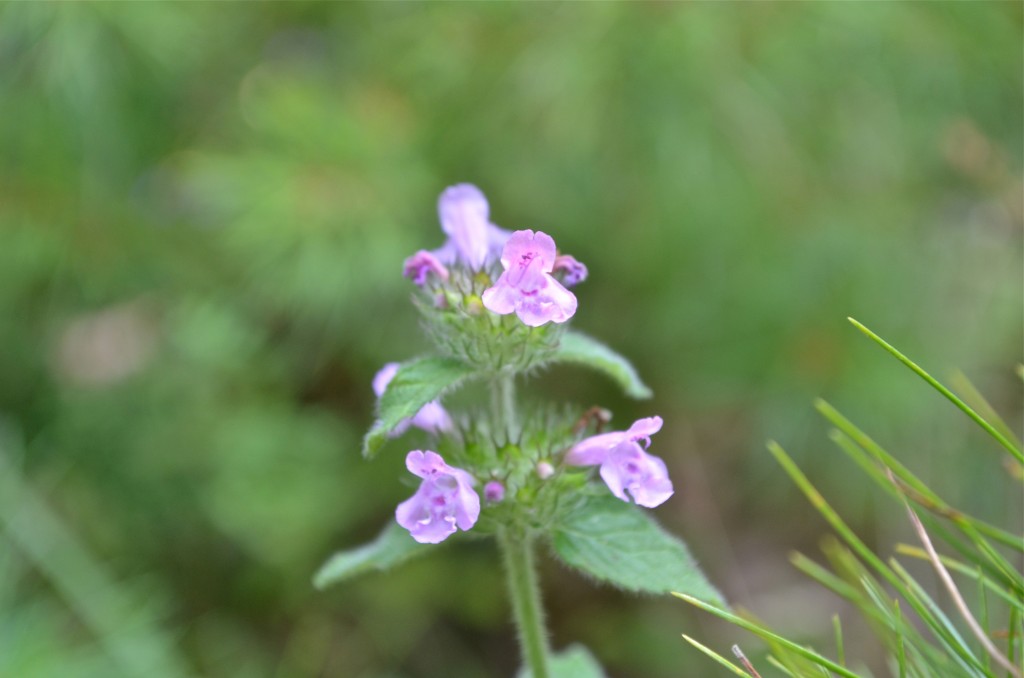Kudos to Alert Flowerophile Brian for leading me to this amazing sight, a flower to jolt the heart of any weary blossom-hunter. Quite big (about 4 feet tall) and showy, and only the second red flower I’ve recorded. On a little-used trail at Noanet. Flowers July through September. Likes to grow near streams, which is exactly where this one is. Pollinated mainly by hummingbirds because most insects aren’t big enough to manage the large tubular flowers. My book says it’s fairly common, but I don’t think I’ve ever seen it before. Leaf teas brewed for medicinal use by indigenous tribes. Native. It was introduced to Europe in the 1620s. Campanula family.
Cardinal Flower, Scarlet Lobelia (Lobelia cardinalis)

